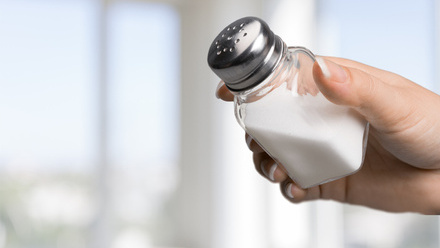Gaynor Bussell, on some key facts about this crucial life-stage for women.
The average age when periods end is 511 (see references below)
When a woman’s periods end it heralds a significant drop in oestrogen levels giving rise to certain symptoms in 80% of women. The most common symptoms include hot flushes (40%), night sweats (17%), insomnia (16%), vaginal dryness (13%), mood disorders (12%), and weight gain (12%).2 Symptoms vary from woman to woman in their severity and type but can affect quality of life. Evidence exists that many symptoms can be helped by changes to diet and lifestyle.
The risk of unacceptable weight gain increases significantly at the menopause 3
Weight gain at time of menopause is due to a fall in metabolic rate by about 10%.4 Keeping active and trying to keep in control of calorie intake is thus vital at this age to offset weight gain. Weight tends to be deposited centrally after the menopause which can lead to metabolic diseases such as diabetes5 and cardiovascular disease. There is some evidence that weight training can offset central adiposity, help preserve muscle mass and raise the metabolic rate.6, 7 Excess weight also carries other risks during the menopause such as increase in joint pain, increased risk of developing certain cancers, such as breast and colorectal cancer, exacerbation of hot flushes and night sweats.8 Weight gain at this time can also contribute to poor self-esteem and low moods.
Bone loss is escalated during the menopause and continues for up to ten years after13
For menopausal women with no risk of osteoporosis, the daily recommended amount of calcium (in the UK) is 700mg, but the National Osteoporosis Society suggest that those with osteoporosis requiring treatment should have between 1000-1200mg calcium a day.14,15 Weight-bearing exercise, such as walking, dancing and weight training, will also help to offset osteoporosis during the menopause.
During the menopause there is a rise in free circulating oestrogen due to a fall in sex hormone-binding globulin
This increases the risk of developing hormone sensitive cancers, in particular of the breast. The risk of developing these cancers can be reduced by some simple dietary measure such as avoiding excess weight gain, eating more brassica vegetables19, upping fibre intake, especially insoluble fibre20, 21, eating more oily fish but less meat,22 keeping to total fat dietary recommendations and obtaining sufficient Vitamin D.
Exercising regularly, to the level of feeling hot and sweaty, has recently been shown to reduce the number and intensity of hot flushes10
One study showed that for every 5kg excess weight that was lost, there was a 30% improvement in vasomotor symptoms.9 Reducing the intake of alcohol, spicy food and caffeine can also help. A diet high in soya isoflavone may also reduce the incident of hot flushes – around 20mg of the isoflavone genistein as a supplement had a significant effect but this can also be obtained from food sources11.
S-equol, an intestinal bacterial metabolite of the soybean isoflavone daidzein, has also received attention for its ability to alleviate hot flushes, CVD, osteoporosis and other menopausal symptoms. Some studies have suggested that equol producers are more likely to benefit from soya consumption than non-producers.12 More research is also needed to see whether taking probiotics with the isoflavone supplement can increase the production of equol from both genistein and daidzein.
Total cholesterol level tends to rise but levels of HDL cholesterol tend to fall after the menopause16
This is exacerbated if there is weight gain, especially centrally, and little physical activity. Blood pressure can also rise during the menopause and the combination of these factors along with the loss of cardio-protective oestrogen can put women at the same risk of heart disease as men. Women need to adopt strategies to lower LDL and raise HDL cholesterol at the menopause and these include keeping weight in check, reducing saturated fat intake (replacing with polyunsaturated and monounsaturated fats), keeping physically active, eating more soluble fibre such as that found in oats, and adopting a more Mediterranean type diet.17 Eating more soya-based foods such as soya milk and tofu may also help.18
Key points
- The combination of eating a healthy diet, keeping active and avoiding weight gain can help alleviate menopausal symptoms.
- Adding some foods to the diet such as soya, oily fish, oats, possibly probiotics, and milk products or alternatives can help.
- The Mediterranean style diet may help to offset symptoms that accompany the menopause.
References
- Roberts, H. (2007). Managing the menopause BMJ 334(7596), 736-741.
- Sussman M, Trocio J, Best C, Mirkin S, Bushmakin AG, Yood R, Friedman M, Menzin J, Louie M. (2015). Prevalence of menopausal symptoms among mid-life women: findings from electronic medical records. BMC Womens Health.
- Brończyk-Puzoń A, Piecha D, Nowak J, Koszowska A, Kulik-Kupka K, Dittfeld A, Zubelewicz-Szkodzińska B. (2015). Guidelines for dietary management of menopausal women with simple obesity. Prz Menopauzalny. 14(1).
- Metabolism-metabolic-rate.com (2014). Available at: http://metabolism-metabolic-rate.com/why-does-your-metabolic-rate-slow-down-as-you-age/
- Polotsky, H.N., Polotsky, A.J. (2010). Metabolic implications of menopause. Semin Reprod Med. 28(5), 426-34.
- Leite, R.D., Prestes, J., Pereera, G.B., Shiguemoto, G. E., Perez, S.E. (2008). Menopause, highlighting the effects of resistance training. International Journal of Sports Medicine. 31(11), 761-7.
- Seo, D.I., Jun, T.W., Park, K.S., Chang, H.., So, W.Y., Song, W. (2010).12 weeks of combined exercise is better than aerobic exercise for increasing growth hormone in middle-aged women. Int J Sport Nutr Exerc Metab. 20(1), 21-6.
- Thurston RC1, Ewing LJ, Low CA, Christie AJ, Levine MD. (2014). Behavioral weight loss for the management of menopausal hot flashes: a pilot study. Menopause.
- Huang, A.J., Subak, L.L., Wing, R., West, D.S., Hernandez, A.L., Macer, J., Grady, D. (2010). An intensive behavioral weight loss intervention and hot flushes in women. Arch Intern Med. 170(13), 1161-7.
- Bailey et al, (2015). Exercise training reduces the acute physiological severity of post-menopausal hot flushes. Journal of Physiology.
- Taku K et al. (2012). Extracted or synthesised Soybean isoflavone reduce menopausal hot flash frequency and severity: systematic review and meta-analysis of randomised controlled trials. Menopause. 19(7): 776-790.
- Utian WH1, Jones M, Setchell KDJ. (2015). S-equol: a potential non-hormonal agent for menopause-related symptom relief. Womens Health (Larchmt). 24(3):200-8.
- North American Menopause Society (2010) Position Statement: Management of osteoporosis in postmenopausal women. Menopause: The Journal of the North American Menopause Society. 17(1), 25-54.
- National Osteoporosis Society. (2011). All about osteoporosis. Downloadable from: http://www.nos.org.uk/page.aspx?pid=1024&srcid=264.
- National Osteoporosis Society. (2011). Drug treatment for osteoporosis. Downloadable from: http://www.nos.org.uk/page.aspx?pid=1024&srcid=264.
- Davidson, M.H., Maki, K.C., Karp, S.K., Ingram, K.A. (2002). Management of hypercholesterolaemia in postmenopausal women. Drugs & Aging. 19(3), 169-78.
- Llaneza, P., Gonzalez, C., Fernandez-Iñarrea, J., Alonso, A., Diaz-Fernandez, M.J., Arnott, I., Ferrer-Barriendos, J. (2010). Soy isoflavones, Mediterranean diet, and physical exercise in postmenopausal women with insulin resistance. Menopause. 17(2), 372-8.
- Ma D1, Taku K, Zhang Y, Jia M, Wang Y, Wang P. (2013). Serum lipid-improving effect of soyabean β-conglycinin in hyperlipidaemic menopausal women. Br J Nutr. 110(9):1680-4.
- Fowke, J.H., Longcope, C., Hebert, J.R. (2000). Brassica vegetable consumption shifts estrogen metabolism in healthy postmenopausal women. Cancer Epidemiol Biomarkers Prev. 9(8), 773-9.
- Park, Y., Brinton, L.A., Subar, A.F., Hollenbeck, A., Schatzkin, A. (2009). Dietary fiber intake and risk of breast cancer in postmenopausal women: the National Institutes of Health-AARP Diet and Health Study. Am J Clin Nutr. 90(3), 664-71.
- Suzuki, R., Rylander-Rudqvist, T, Ye, W., Saji, S., Adlercreutz, H., Wolk, A. (2008). Dietary fiber intake and risk of postmenopausal breast cancer defined by estrogen and progesterone receptor status--a prospective cohort study among Swedish women. Int J Cancer. 15;122(2), 403-12.
- Cade, J.E., Taylor, E.F., Burley, V.J., Greenwood, D.C. (2010). Common dietary patterns and risk of breast cancer: analysis from the United Kingdom Women's Cohort Study. Nutr Cancer.62(3):300-6.
Other sources:
- Bussell, G. (2015). The Menopause: How to Cope [Kindle Edition] Available at: http://goo.gl/6Hb3DF
- Thurston RC1, Santoro N, Matthews KA. (2011). Adiposity and hot flashes in midlife women: a modifying role of age. J Clin Endocrinol Metab. 96(10):1588-95.







